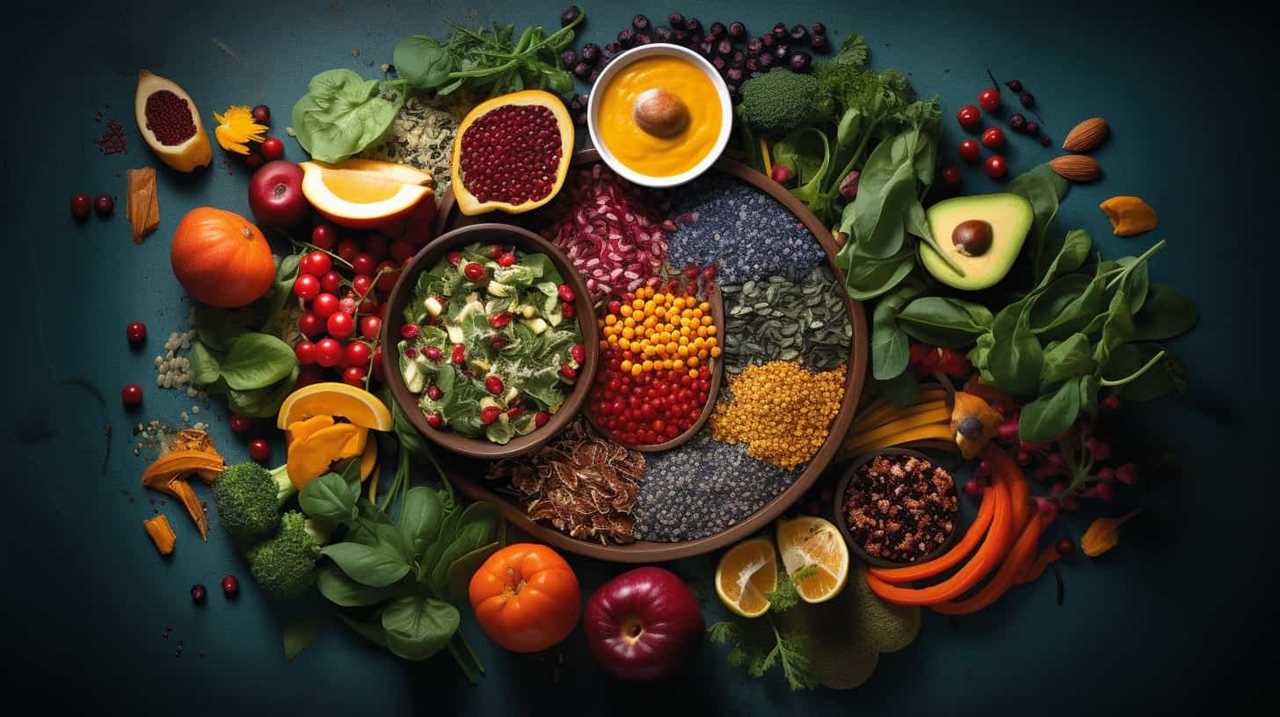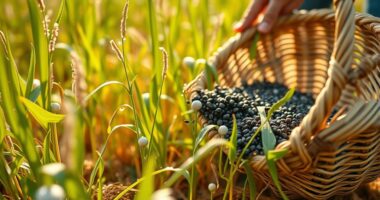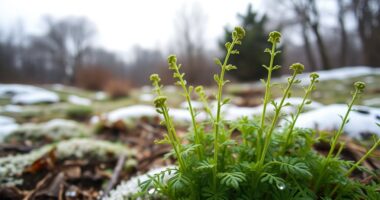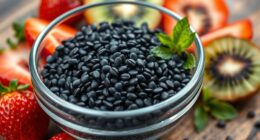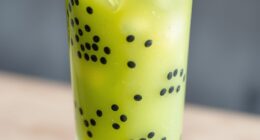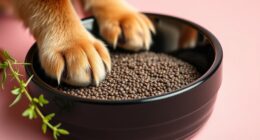Welcome to our detailed guide on growing chia seeds indoors! We are thrilled to help you learn how to successfully cultivate these healthy superfoods in the comfort of your own home.
With our step-by-step instructions and expert tips, you’ll learn everything from choosing the right chia seeds and creating the perfect growing environment to nurturing your seedlings and harvesting the bountiful rewards.
Get ready to embark on a journey of self-sufficiency and health as we serve you the knowledge you need to grow chia seeds like a pro.
Key Takeaways
- Select high-quality chia seeds labeled as ‘sprouting’ or ‘germinating’
- Create an ideal growing environment with optimal light conditions and temperature range
- Regularly water and care for chia seedlings, addressing any issues promptly
- Harvest and store chia seeds properly, and incorporate them into a healthy diet for their numerous benefits
Choosing the Right Chia Seeds
We need to select the appropriate quantity of chia seeds for optimal indoor growth. When selecting high quality chia seeds, it’s important to understand the various varieties available.
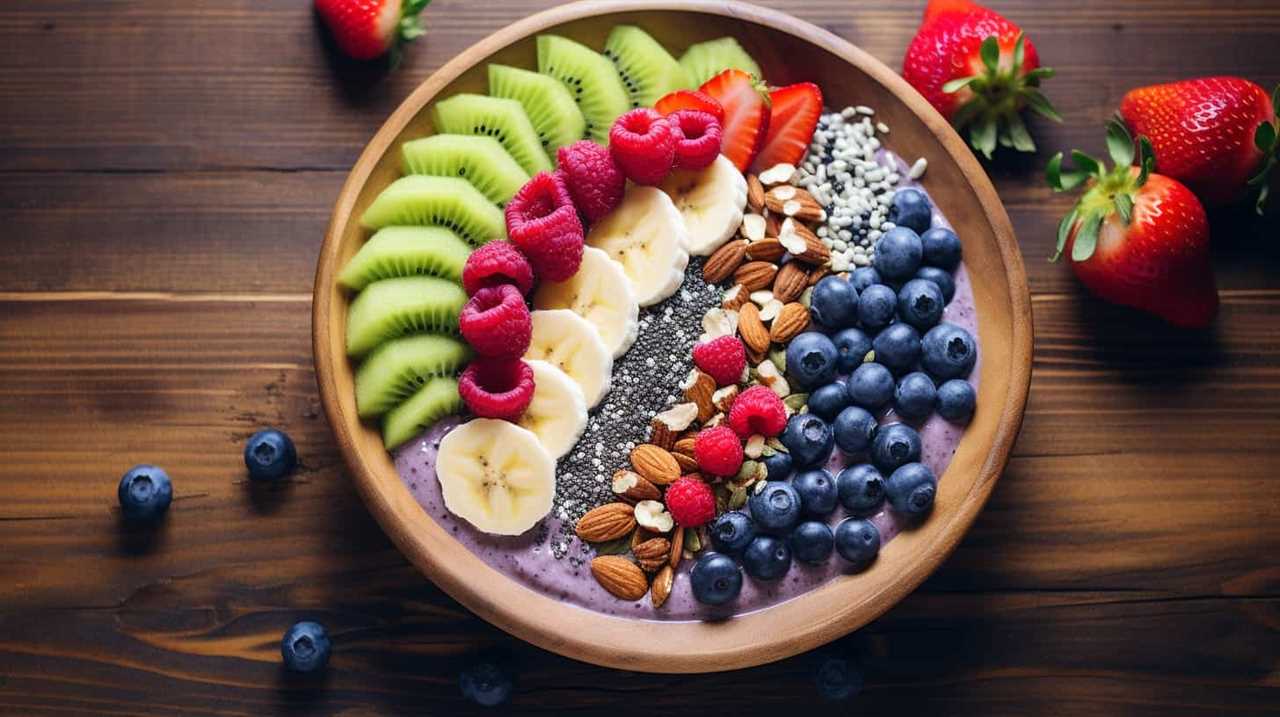
There are two main types of chia seeds: black and white. Black chia seeds are the most common variety and have a mild, nutty flavor. White chia seeds, on the other hand, are slightly milder in taste and have a more subtle flavor profile.
It’s recommended to choose organic chia seeds, as they’re grown without the use of harmful pesticides or synthetic fertilizers. Additionally, look for chia seeds that are labeled as ‘sprouting’ or ‘germinating,’ as these have a higher germination rate and are more likely to produce healthy plants.
Setting up the Ideal Growing Environment
To create the ideal growing environment for your chia seeds indoors, it’s important to consider factors such as temperature, lighting, and moisture levels.
Start by creating a DIY chia seed sprouting tray. You can easily make one by using a shallow container with drainage holes and filling it with a mixture of potting soil and compost.
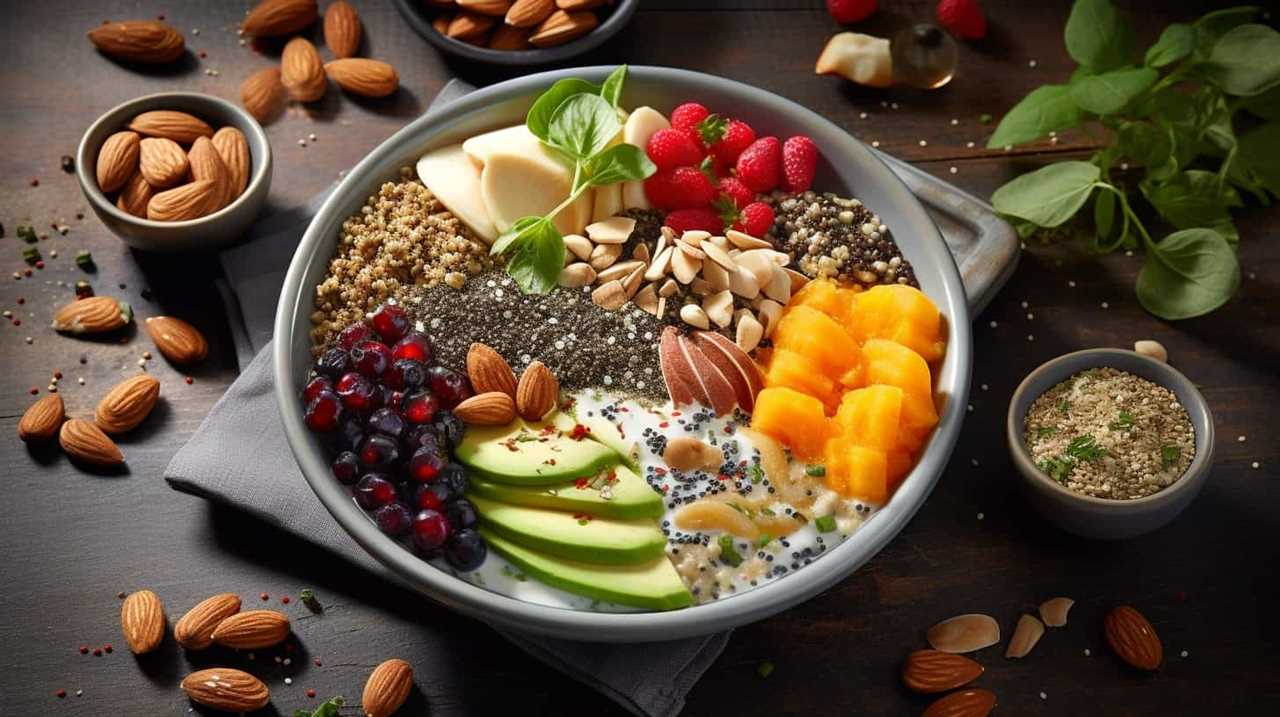
Optimize light conditions by placing the tray near a south-facing window or using artificial grow lights. Chia seeds require about 12-14 hours of light per day for optimal growth.
Maintain a temperature range of 65-75°F (18-24°C) during the day and slightly cooler at night.
Make sure to keep the soil consistently moist, but not waterlogged, by watering regularly or using a spray bottle.
With the right environment, your chia seeds will thrive and provide you with nutritious sprouts.
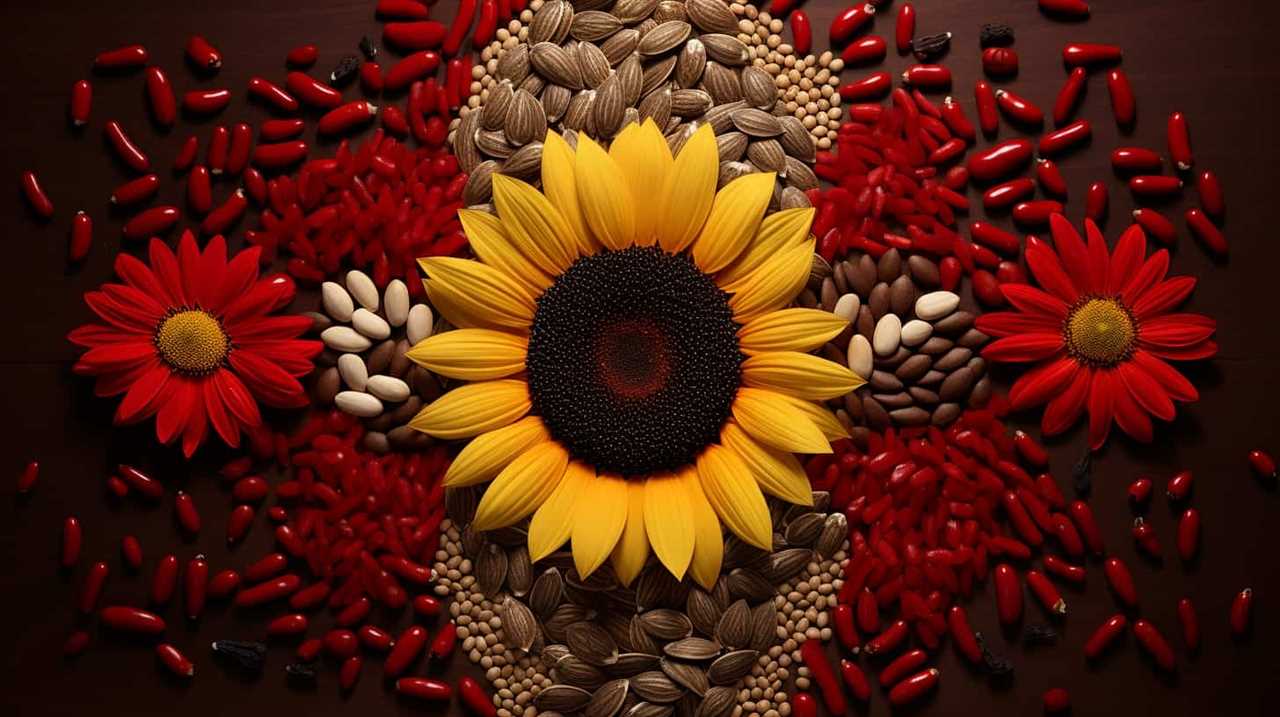
Planting and Germinating Chia Seeds
Once you have set up the ideal growing environment for your chia seeds indoors, it’s time to move on to planting and germinating the seeds. To germinate chia seeds indoors, start by soaking them in water for about 20 minutes. Then, spread the seeds evenly on a damp paper towel or a seedling tray filled with moist seed-starting mix. Cover the seeds with another layer of moist paper towel or seed-starting mix, ensuring they aren’t exposed to direct sunlight. Maintain a consistent temperature of around 70-75°F (21-24°C) and keep the seeds moist by misting them regularly. Germination usually takes about 7-10 days.
If you encounter any issues during germination, such as mold growth or slow germination, it’s important to troubleshoot the problem. Ensure proper air circulation, avoid overwatering, and provide adequate light without direct exposure to intense sunlight. Additionally, check the quality of your seeds and consider using fresh ones if necessary.
Transitioning into the subsequent section about nurturing and caring for chia seedlings, it’s important to continue providing the right conditions for their growth.
Nurturing and Caring for Chia Seedlings
After germination, it’s essential to provide optimal care and nourishment for your chia seedlings. A consistent watering schedule is crucial to ensure their healthy growth. Chia seedlings thrive in moist soil, so it’s important to keep the soil evenly moist but not waterlogged. Watering them once a day is typically sufficient, but adjustments may be needed based on the humidity levels in your environment.
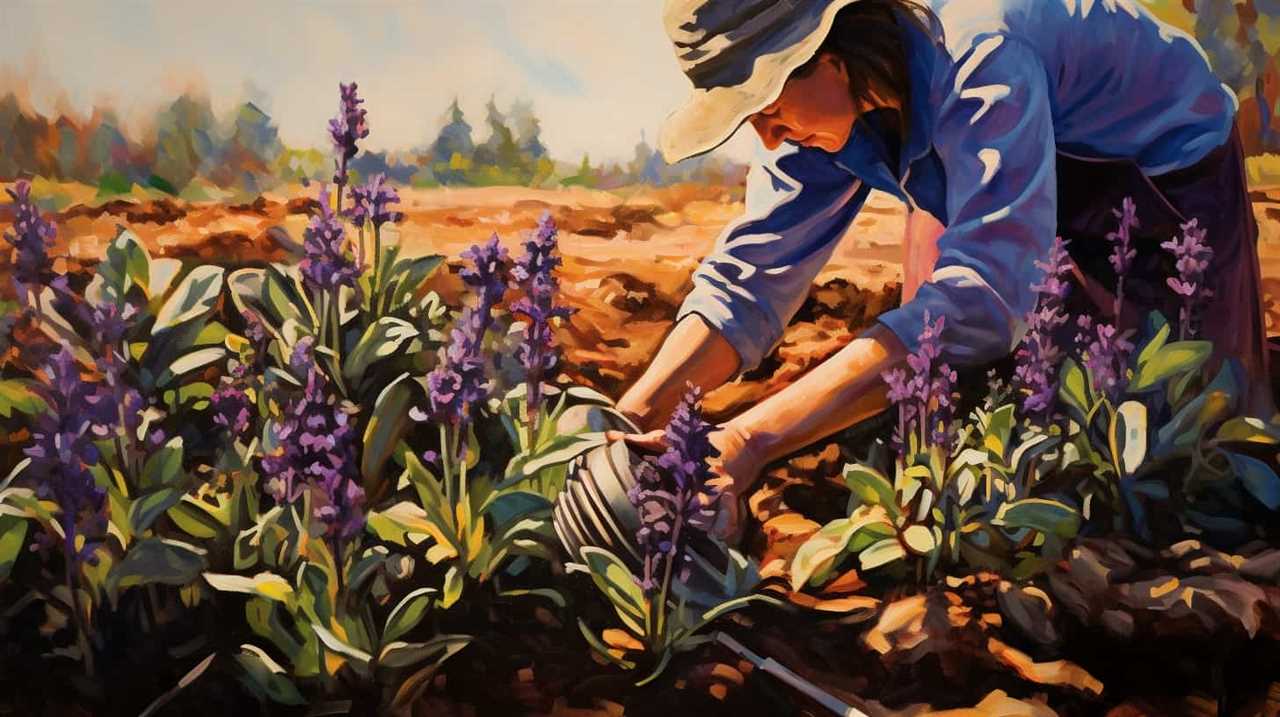
It’s important to monitor the moisture level of the soil regularly and adjust the watering schedule accordingly. Overwatering can lead to root rot, while underwatering can cause stunted growth or wilting. Additionally, it’s important to troubleshoot common issues such as nutrient deficiencies, pests, or diseases that may affect the health of your chia seedlings. Regular inspection and prompt action can help ensure their successful growth.
Harvesting and Storing Chia Seeds
Continuing the care and nourishment of our chia seedlings, we now turn our attention to the important task of harvesting and storing the chia seeds.
Harvesting chia seeds is a straightforward process that requires a few simple steps. Here’s how you can do it:
- Wait for the chia plant to fully mature. The seeds are ready for harvest when the flowers have dried and the seed heads have turned brown.
- Gently cut the seed heads from the plant using pruning shears. Place the seed heads in a paper bag to catch any loose seeds that may fall during the process.
Processing chia seeds involves drying and cleaning them before storage. Here’s what you need to do:
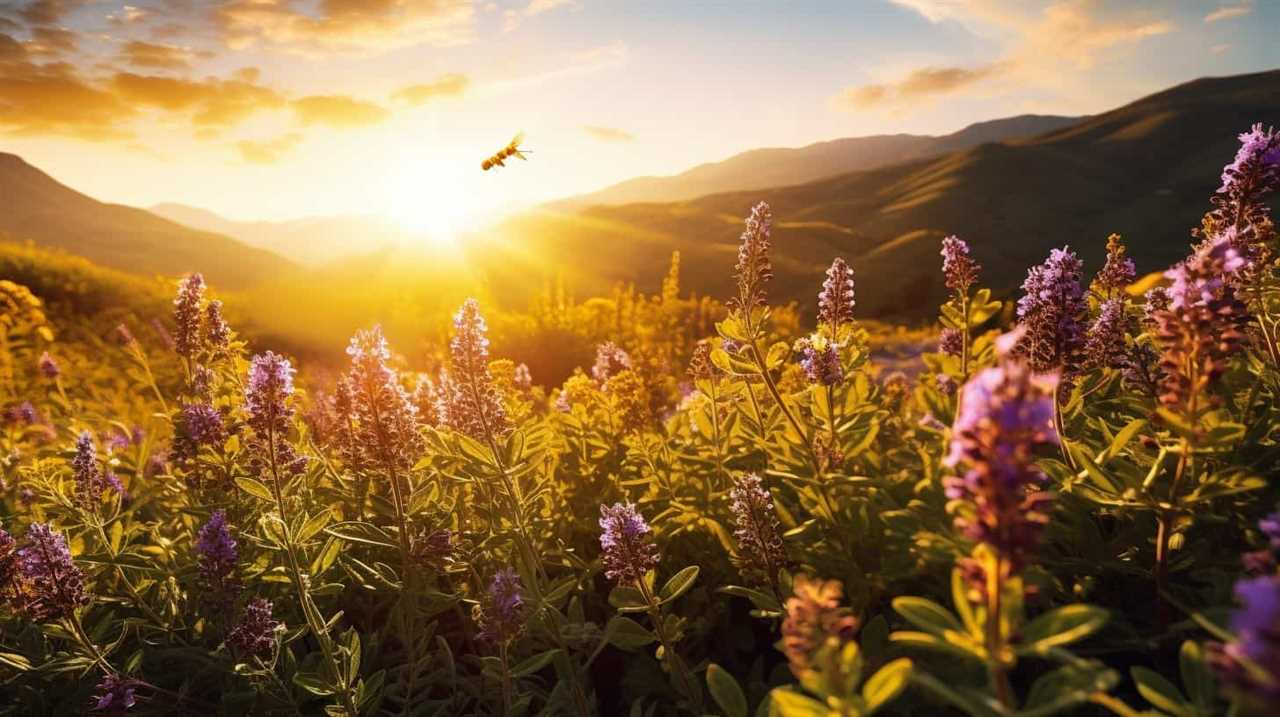
- Spread the harvested seed heads on a clean, dry surface and allow them to dry completely for a few days.
- Once the seeds are dry, gently rub the seed heads between your hands to separate the seeds from the chaff.
- Store the dried chia seeds in an airtight container in a cool, dark place to maintain their freshness.
Consuming chia seeds has numerous benefits, including their high fiber and omega-3 fatty acid content. They can be added to smoothies, yogurt, or baked goods for a nutritious boost.
Frequently Asked Questions
Can I Grow Chia Seeds Outdoors Instead of Indoors?
Growing chia seeds outdoors instead of indoors has its own benefits and drawbacks. While outdoor gardening allows for natural sunlight and more space, it also exposes the seeds to unpredictable weather conditions and pests.
How Long Does It Take for Chia Seeds to Germinate?
Chia seeds typically take 7-10 days to germinate. To speed up germination, soak the seeds in water for a few hours before planting. Ensure a warm temperature and moist soil for optimal growth.
Can I Use Regular Potting Soil to Grow Chia Seeds?
Yes, regular potting soil can be used for growing chia seeds. However, using specialized soil mixtures specifically designed for chia seeds can provide better results. These mixtures offer optimal drainage and nutrient content for successful chia seed growth.
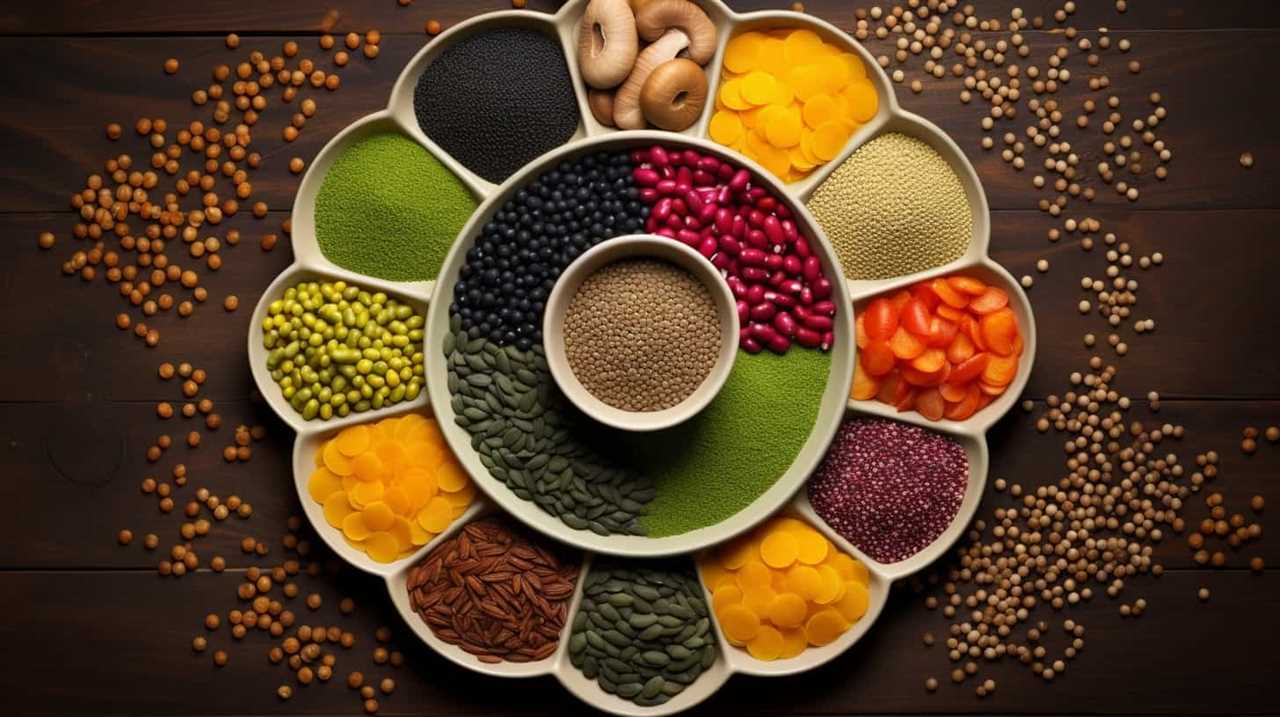
Do I Need to Use Fertilizer When Growing Chia Seeds Indoors?
Yes, fertilizer is necessary for growing chia seeds indoors. While there are alternative growing methods, using fertilizer ensures optimal growth and nutrient uptake. It promotes healthier plants and higher yields, leading to a more successful chia seed cultivation experience.
What Are Some Common Pests or Diseases That Affect Chia Seedlings?
Common pests affecting chia seedlings include aphids, spider mites, and fungus gnats. Diseases that can affect chia seedlings include damping-off, root rot, and powdery mildew. Proper care, such as regular monitoring and maintaining optimal growing conditions, can help prevent and manage these issues.
Conclusion
In conclusion, growing chia seeds indoors can be a rewarding and fulfilling experience.
By choosing the right chia seeds, creating the ideal growing environment, and providing proper care, you can successfully cultivate chia seedlings.
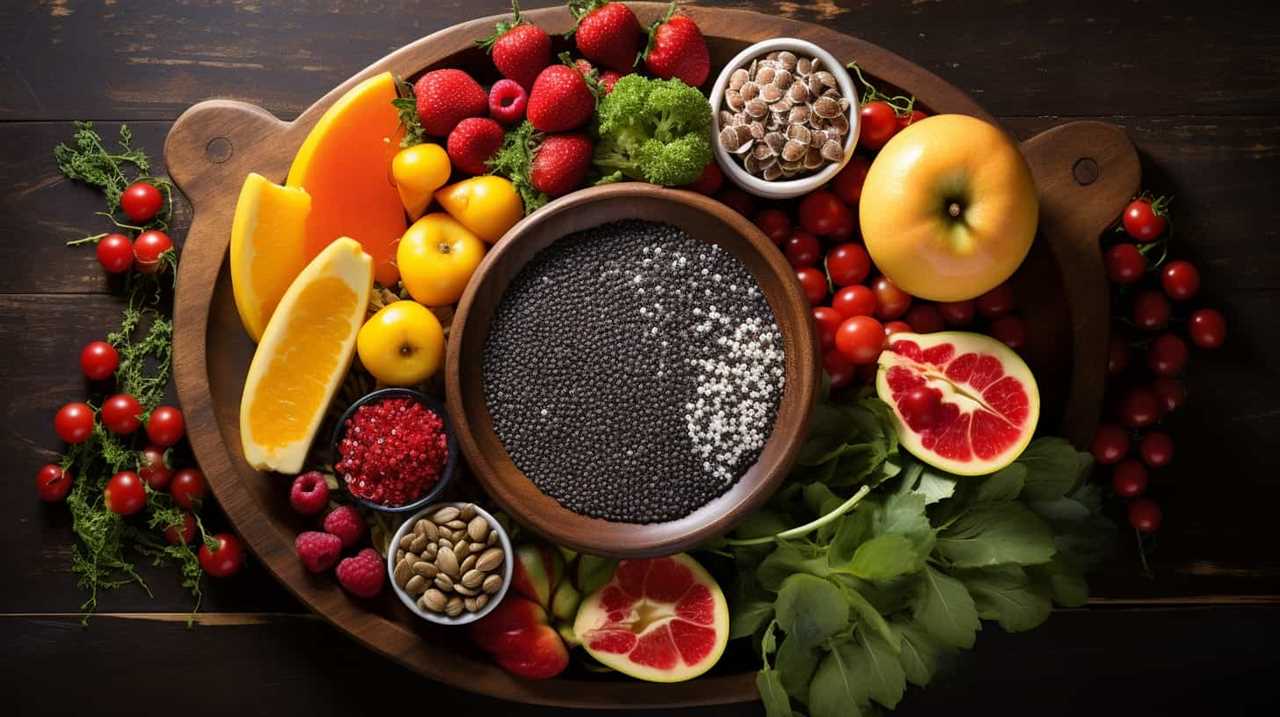
Remember to harvest the seeds at the right time and store them properly to ensure their freshness and longevity.
With a little patience and dedication, you can enjoy the nutritional benefits of chia seeds right from the comfort of your own home.
